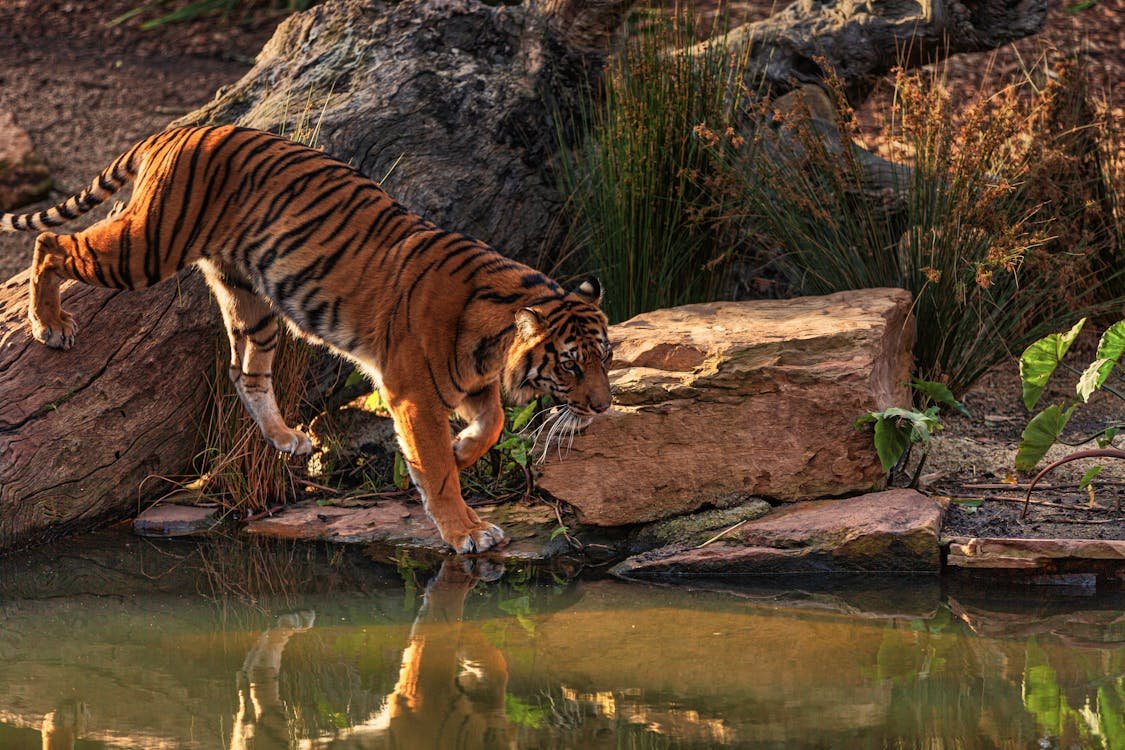Tigers, the majestic and powerful big cats, are renowned for their striking appearance and solitary nature. However, one of the most fascinating aspects of their lives is how they communicate with each other and their environment. Understanding the various forms of communication employed by tigers—such as vocalizations, scent marking, and body language—offers a deeper insight into their behavior, social interactions, and survival strategies.
Vocalizations: The Power of Roars
One of the most iconic ways tigers communicate is through vocalizations, particularly their powerful roars. A tiger’s roar can be heard up to two miles away, making it an effective means of communication over long distances. Roars serve multiple purposes:
- Territorial Declaration: Tigers are solitary animals, and their territories can span several miles. By roaring, a tiger can announce its presence and assert dominance over its territory, warning other tigers to stay away.
- Social Interaction: While generally solitary, tigers may occasionally come together for mating or to raise cubs. Vocalizations during these times can facilitate communication between individuals, helping to establish bonds or convey emotions.
- Alarm Calls: Tigers also use a range of sounds, such as growls, snarls, and hisses, to communicate threats or express aggression. These vocalizations serve as warnings to potential rivals or to signal danger to their cubs.
Scent Marking: The Invisible Message
Scent marking is another critical form of communication for tigers. They possess a keen sense of smell, which plays a vital role in their social interactions and territory maintenance. Here are some key aspects of scent marking:
- Marking Territory: Tigers often use urine and feces to mark their territory. This scent not only marks the boundaries of their domain but also conveys important information to other tigers, such as the individual’s identity, sex, and reproductive status. A strong scent signal can deter intruders and prevent conflicts.
- Communicating Reproductive Status: During mating season, female tigers will increase scent marking to signal their readiness to mate. The scent signals attract males and indicate their presence to others in the area.
- Communication with Cubs: Mother tigers also use scent to communicate with their cubs. By leaving scent trails, they can guide their young and help them learn about their environment.
Body Language: The Subtle Signals
While vocalizations and scent marking are overt forms of communication, tigers also rely heavily on body language to convey messages. Understanding these subtle signals is essential for interpreting a tiger’s mood and intentions:
- Posture: A tiger’s posture can indicate its confidence or aggression. A relaxed posture may suggest comfort or playfulness, while a tense stance, with raised fur and bared teeth, signals a threat or readiness to fight.
- Tail Movements: The tail is a crucial tool for communication. A high, twitching tail can indicate excitement or curiosity, while a low, swaying tail may suggest calmness. Conversely, an agitated tiger may flick its tail rapidly as a sign of annoyance or frustration.
- Facial Expressions: Tigers also communicate through their facial expressions. A relaxed face with slightly open eyes suggests calmness, whereas narrowed eyes and a tense jaw indicate aggression or annoyance.
Conclusion
Tigers are complex creatures, and their communication methods reflect their adaptability and intelligence. From powerful roars that echo through the jungle to the silent messages conveyed through scent and body language, these magnificent cats have developed a sophisticated system to interact with their environment and each other. Understanding these forms of communication not only enhances our appreciation of tigers but also highlights the importance of conserving their habitats to ensure their survival in the wild. By protecting these incredible animals and their ecosystems, we can help ensure that the powerful echoes of tiger roars continue to resonate in the wild for generations to come.

